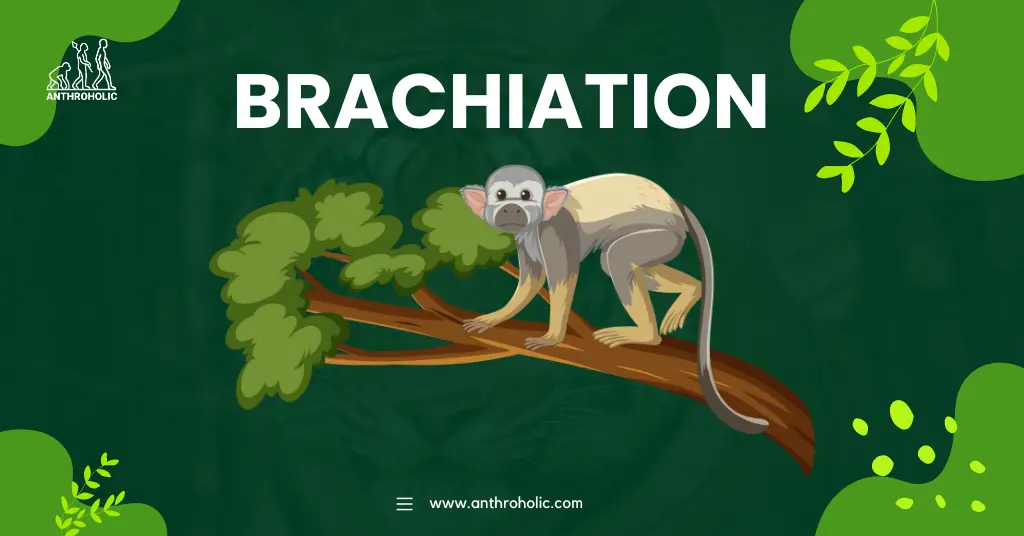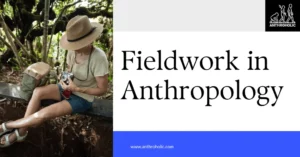AI Answer Evaluation Platform Live Now. Try Free Answer Evaluation Now
Brachiation
Brachiation, derived from the Latin ‘brachium’ for arm, is a specific form of locomotion characterized by swinging from one handhold to another. It’s commonly associated with certain primates, notably gibbons and siamangs. As we dive deeper into the realm of Primatology, we’ll explore this fascinating mode of movement and its implications in Anthropology.

Brachiation: Defining the Term
Brachiation, or arm-swinging, is a type of arboreal locomotion where an organism moves by swinging from hold to hold using only its arms. This locomotor behavior is dominant in some primates and has captured the interest of anthropologists for its evolutionary implications.
Key features of brachiators include:
- Long, powerful arms
- Flexible shoulder joints
- A light, streamlined body
These features enable the primate to swing efficiently through the trees, exploiting a niche that many predators cannot access.
The Brachiation Spectrum
Not all brachiation is created equal. Anthropologists categorize brachiation into two main types: Continuous or true brachiation, and discontinuous or semi-brachiation.
Table 1: Brachiation Types
| Type | Definition | Primates Example |
|---|---|---|
| True Brachiation | The primate swings using a hand-over-hand motion, with the body suspended by one arm at a time. | Gibbons and Siamangs |
| Semi-Brachiation | The primate swings using a hand-under-hand motion, often using both arms for support or walking on branches. | Spider Monkeys, Orangutans |
The Evolutionary Perspective
Brachiation has piqued the interest of evolutionary anthropologists due to its potential implications on human evolution. Some theories suggest that our early ancestors used a form of brachiation before transitioning to bipedalism. These theories are based on:
- Anatomical Similarities: The shared physical characteristics between brachiators and humans, such as a flexible shoulder joint, suggest a common evolutionary path.
- Genetic Evidence: DNA studies have shown close relations between humans and apes, further supporting the hypothesis of a shared brachiating ancestor.
Brachiation and Primate Adaptation
Brachiation offers primates certain survival advantages, making it a key point of discussion in Primatology.
Efficiency and Speed
Brachiators can move quickly and efficiently through the trees, outpacing predators and reaching food sources inaccessible to others. Gibbons, the masters of brachiation, can reach speeds of up to 56 km/h.
Predator Evasion
A key advantage of brachiation is the ability to avoid ground-dwelling predators. This mode of locomotion allows these primates to exist in a relatively safe arboreal environment.
Resource Accessibility
Brachiation allows access to a variety of food sources in the treetops, from fruits and leaves to insects and small vertebrates, thus enhancing their survival capabilities.
The Mechanics of Brachiation
Understanding the biomechanics of brachiation is critical to understanding how this form of locomotion has shaped the evolution of primates, including our human ancestors.
Energy Conservation
Brachiation has a significant benefit in terms of energy conservation. As the brachiator swings under a branch, potential energy transforms into kinetic energy, and this cyclical transition makes brachiation an energy-efficient form of travel.
Muscle Coordination and Strength
The swing phase of brachiation is initiated by the shoulder muscles, with subsequent movements dominated by the elbow and then the wrist muscles. Brachiating primates have muscular adaptations that provide the necessary strength and coordination for this movement.
The Role of Morphology
A brachiator’s anatomy is specialized for its mode of locomotion. Key features include elongated arms, a freely rotating shoulder joint, and a short, compact body. This unique morphology allows brachiators to travel with speed and agility through the trees.
Brachiation: An Evolutionary Stepping Stone?
While the consensus is that brachiation and bipedalism (walking on two legs) are exclusive, some anthropologists suggest that brachiation may have been a stepping stone in the evolution towards human bipedalism.
The Suspensory Hypothesis
This hypothesis suggests that our ancestors were brachiators before becoming bipedal, and it points to morphological similarities between humans and apes, such as the flexible shoulder joint.
Counterarguments
However, other experts argue that the transition from brachiation to bipedalism is unlikely, given the considerable differences in body structure required for these two forms of locomotion.
Implications for Anthropology and Primatology
The study of brachiation provides critical insights into primate behavior and evolution.
- It helps to understand primate adaptation, as brachiation is a successful survival strategy for certain primates.
- It offers a unique lens on evolutionary processes, potentially revealing patterns that shaped our own evolutionary history.
- It aids in the conservation of primate species, by understanding their behaviors and habitats better.
The Future of Brachiation Studies
The study of brachiation continues to yield insights into primate behavior, adaptation, and evolution. Advances in technology, such as drone surveillance and digital motion tracking, have allowed researchers to study brachiation more thoroughly than ever before. This continuous research promises to shed further light on our understanding of primate and human evolution.
Conclusion
Brachiation is an intriguing mode of primate locomotion that offers a unique perspective on primate adaptation and evolutionary anthropology. Its study contributes significantly to our understanding of the diversity and complexity of life on Earth, enhancing our knowledge of both primate biology and human evolution.
References
- Cant, J. G. (1987). Positional behavior of female Bornean orangutans (Pongo pygmaeus). American Journal of Primatology, 12(2), 71-90.
- Fleagle, J. G. (2013). Primate Adaptation and Evolution. Academic Press.
- Larson, S. G. (1998). Unique aspects of quadrupedal locomotion in nonhuman primates. In Primate Locomotion (pp. 157-173). Springer, Boston, MA. https://www.researchgate.net/publication/285897592_Unique_aspects_of_quadrupedal_locomotion_in_nonhuman_primates_in_Primate_Locomotion
- Thorpe, S. K., & Crompton, R. H. (2005). Locomotor ecology of wild orangutans (Pongo pygmaeus abelii) in the Gunung Leuser Ecosystem, Sumatra, Indonesia: a multivariate analysis using log-linear modelling. American Journal of Physical Anthropology, 127(1), 58-78.
- Crompton, R. H., Vereecke, E. E., & Thorpe, S. K. (2008). Locomotion and posture from the common hominoid ancestor to fully modern hominins, with special reference to the last common panin/hominin ancestor. Journal of Anatomy, 212(4), 501-543.
- Tuttle, R. (1981). Evolution of hominid bipedalism and prehensile capabilities. Philosophical Transactions of the Royal Society of London. B, Biological Sciences, 292(1057), 89-94.
- D’Août, K., & Vereecke, E. E. (2011). The effects of locomotion on the structural characteristics of avian limb bones. Zoological Journal of the Linnean Society, 162(1), 201-213.



